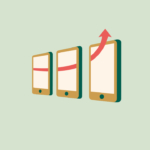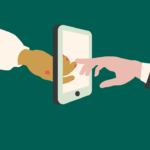 https://rdb.agency/wp-content/uploads/2020/07/rdb-content-marketing-podcast-header-mobil-e1596545795410.jpg
1000
720
RDB Agency
https://rdb.agency/wp-content/uploads/2020/04/logo.svg
RDB Agency2020-07-22 11:04:392020-09-29 11:31:09Stimulate Your Bottom Line with Growth Marketing
https://rdb.agency/wp-content/uploads/2020/07/rdb-content-marketing-podcast-header-mobil-e1596545795410.jpg
1000
720
RDB Agency
https://rdb.agency/wp-content/uploads/2020/04/logo.svg
RDB Agency2020-07-22 11:04:392020-09-29 11:31:09Stimulate Your Bottom Line with Growth MarketingFrom “Top of Funnel” to “Bottom of Funnel, from awareness to conversion, many different content marketing models have been developed over the past decades. They may all use different wording, but at the end of the day, all of them are trying to achieve the same goal; to turn potential customers into active customers, or even better, loyal customers.
Why is full-funnel marketing important?
Your brand has a story to tell, a purpose that your company lives by and values you want to share. You also have a product that creates value in the marketplace, and solutions to offer your prospective customers.
A full-funnel is important to ensure that you reach the right target audience, at the right time of their customer journey, and to make the most of your marketing spend. Having a properly set up full-funnel means that you can accurately capture your audience’s attention and provide them with the needed background and education. This leads to an authentic conversion, and your customers coming back for more.
One of the biggest challenges in content marketing is developing a plan that will lead to a positive ROI. With full-funnel marketing, especially the way we do it at RDB, we’re able to better divide the media spending of our clients and ensure that money is spent where it will get the best results.

The RDB approach to building a funnel
We selected the best parts of many available models to customize our own RDB full-funnel approach. We cover all the important aspects of the customer journey:
-
Connect
-
Convince
-
Convert
-
Continue
We connect… with potential customers, to build brand awareness. At this stage of the funnel, it’s important to reach many potential audiences and see how they respond to your brand’s messages and content.
It’s important to convey the key elements of your brand, including your core business, values and brand purpose. This gives your future customers a reason to relate to your company. Scour your data and look for emotional insights and personality traits of your audience to show them points of similarity. Video content is the perfect way to communicate at this stage of the funnel. Remember, you only get one chance at a first impression!
Measure this with metrics including reach, post or ad engagement (likes, shares and comments) and video views. The main aim is to create an audience that can be retargeted later on in the funnel. That way we make sure that the marketing spend lower in the funnel is only targeting those who have a connection with your brand. In this stage, we’re constantly optimizing new content to improve engagement and awareness.
We convince… the target audiences through well formulated RTBs, testimonials and thought leadership.. The middle of the funnel focuses on customer education through long-form content and how-tos.
This is the time to build on the learnings from the connect stage. See which topics resonate with your audience most. What do they care about? What are their main pain points? In the data, see your audience’s motivators and barriers towards purchasing, so you can share more relevant content with them. By understanding the psyche of your audience, you can more accurately convince them with your second line of content. In this stage, driving to a blog or landing page is ideal. Customize your message based on their individual needs and preferences to get the best return.
For this part of the funnel, track your success through link clinks and profile visits. The quality of your page visits is what matters most. Prioritize quality over quantity. Look at the data from your ad account and website in order to see the full picture. Compare link clicks to page visits, bounce rates and session duration. This data forms a cohesive picture of how your content is resonating with your selected audiences.
We convert… the audience segments by driving them to a clear action. The bottom of the funnel is where the real return on investment begins.
It’s important at this stage to have a strong message with a clear call-to-action (CTA). You want this audience member to buy your product! This is where you might need an incentive for them to convert to a sale. In your content (like a video or carousel), show the brand within the first 3 seconds and don’t underestimate the power of user experience. If it takes the customer too many clicks, or the page isn’t intuitive, then it won’t result in a sale. Keep the messaging consistent, match the visuals with the copy, and create a journey that’s simple and intuitive.
The bottom of funnel is about building and deepening your brand’s relationship with new and existing customers. The type of conversion you choose can be a product sale, but it can also include a newsletter subscription or submission of a contact form. No matter which conversion you choose, make sure that you can track, measure, learn and optimize based on the data.
We continue… campaigns to retarget existing customers through loyalty programs, newsletter marketing and paid search. This ensures that all customers who once had an interest in the brand are reminded with relevant, tailored content.
Your previous or lapsed customers are a great community to tap into. It’s a memory refresh where you remind them why they were initially drawn towards your brand and how they can continue this relationship. Think of loyalty programs, special offers on their favorite products or opportunities to get involved with your brand.

Top 5 tips from our funnel experts
So where do you begin with the full-funnel approach? Here are some of our best pieces of advice to get started.
- Know your audience beforehand.
- Set clear and measurable goals for each stage. Then create a measurement framework around it.
- Have a solid campaign structure that enables you to build up your audiences for each funnel stage, then lead them through it.
- Keep tracking in mind. Ensure you have the metrics in place to properly track your campaign in order to accurately report on your KPIs.
“Building a funnel takes time, but if it’s done right
it will pay off in the end. We promise!”

